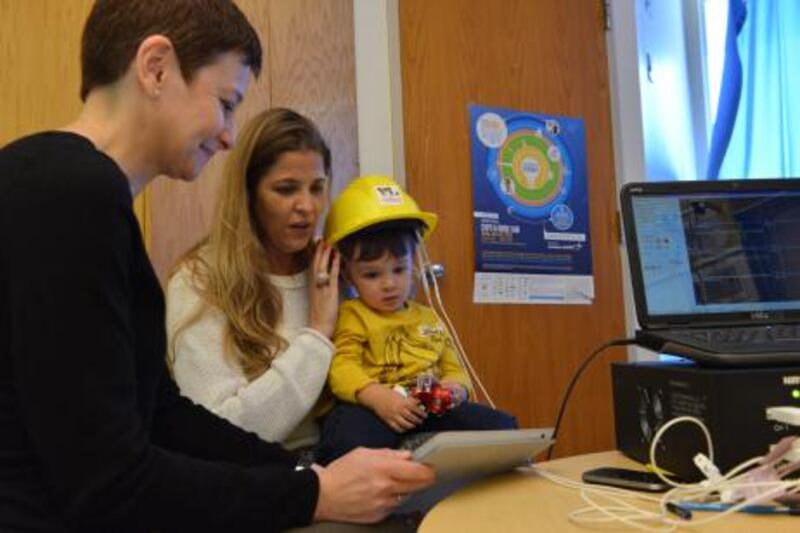Where does it hurt, and how much? Most adults can answer those questions, but for doctors treating children it can be a challenge to obtain the information they need.
A new clinic is changing that with two inventions that could revolutionise the treatment of children's pain - not just in the United States, where the clinic opened last month, but also in the UAE, source of the funds behind the American unit.
The first new development is software that maps body motion, which doctors are using in conjunction with virtual-reality sports video games. While the children play, medical staff are gathering vital information about their bodies.
The second invention is a new device that allows doctors to measure a patient's perception of pain objectively - a notoriously difficult task with children, who often cannot verbalise their feelings.
The breakthroughs are taking place in a pain clinic at the Sheikh Zayed Institute for Paediatric Surgical Innovation in Washington, DC. The institute was set up after a US$150 million (Dh551m) gift from the Government of Abu Dhabi to the US Children's National Medical Centre in 2009.
The clinic treats children recovering from invasive surgery or undergoing extensive medical treatment, such as cancer therapy. Since its soft opening last month, it has treated about 60 children, with plans to fully launch in April.
One of its advantages is its ability to turn what children usually perceive as an unpleasant experience into just the opposite, said Dr Kurt Newman, president and chief executive of Children's National.
Children often find a traditional visit to a doctor intimidating, he said, and this creates an obstacle to treatment. "That experience is even further exacerbated and intensified if the child is feeling pain," he said. "But here, the doctor and therapist will break down those barriers and create an experience where the child is having fun. As they get involved with their activities, doctors are gathering information."
An example of this is using virtual reality games to track children's body movements. The hardware uses modern gaming platforms and the software, which maps body motion, was developed by scientists at the institute.
"While the child is engaged in the game - playing tennis or a particular sport, we're gathering data - looking at the range of motion, speed and angle at which they can move their limbs," said Dr Julia Finkel, the director of pain medicine at the institute. "Pain usually limits that motion."
Sensors can also measure skin temperature, an important diagnostic element for pain. The games can also be modified to act as physical therapy, and the technology can be used to chart a patient's progress.
Scientists at the institute have also developed a patented device, called a human algometer. It delivers low-intensity electrical stimulus to any area of concern on the body and measures response through frequencies of light to determine brain activity.
The response allows experts to objectively measure pain perception, type of pain and the impact of medication and treatment. It also allows the team to separate the emotional component of pain from the actual sensation transmitted by the pain nerves, Dr Finkel said.
Traditional self-reporting techniques, such as asking a patient to rate their pain on a scale of one to 10, provide only a subjective perception of pain. "With children or elderly patients doctors often have to resort to the trial and error method of treatment," Dr Finkel said. "However, with this instrument, we're able to develop very specific therapy."
The clinic will also look into methods of treating the cause of inflammation. For example patients with sickle cell disease, which affects nearly 2 per cent of the UAE population, are more likely to experience recurring pain. This is often treated with morphine, which "treats the pain but doesn't address why the pain is occurring", Dr Finkel said.
Researchers at the institute discovered that pain sensitivity is often much higher in these patients, and that by blocking certain receptors they could increase a patient's pain threshold.
Such findings benefit children all over the world and long-term plans could involve adopting a similar pain-management model for children in the UAE, Dr Newman said.
"The discoveries being made and the new techniques being developed at the institute are shared with Abu Dhabi," he said. "The initiative we have going with pain management is a prime example."





